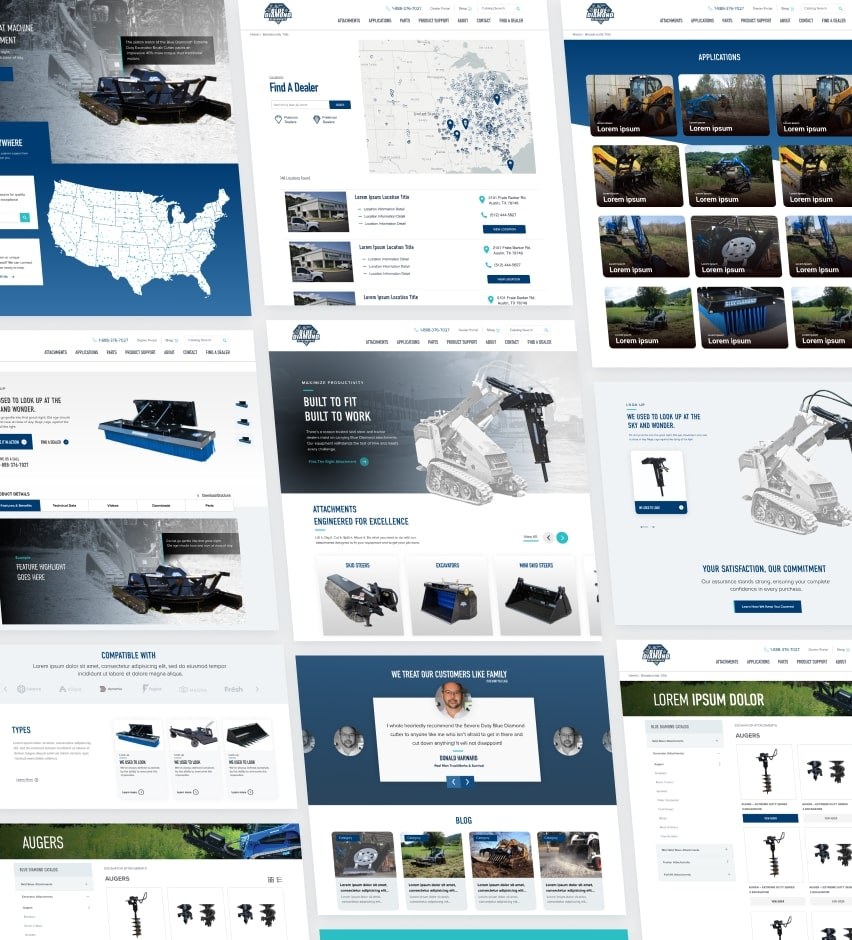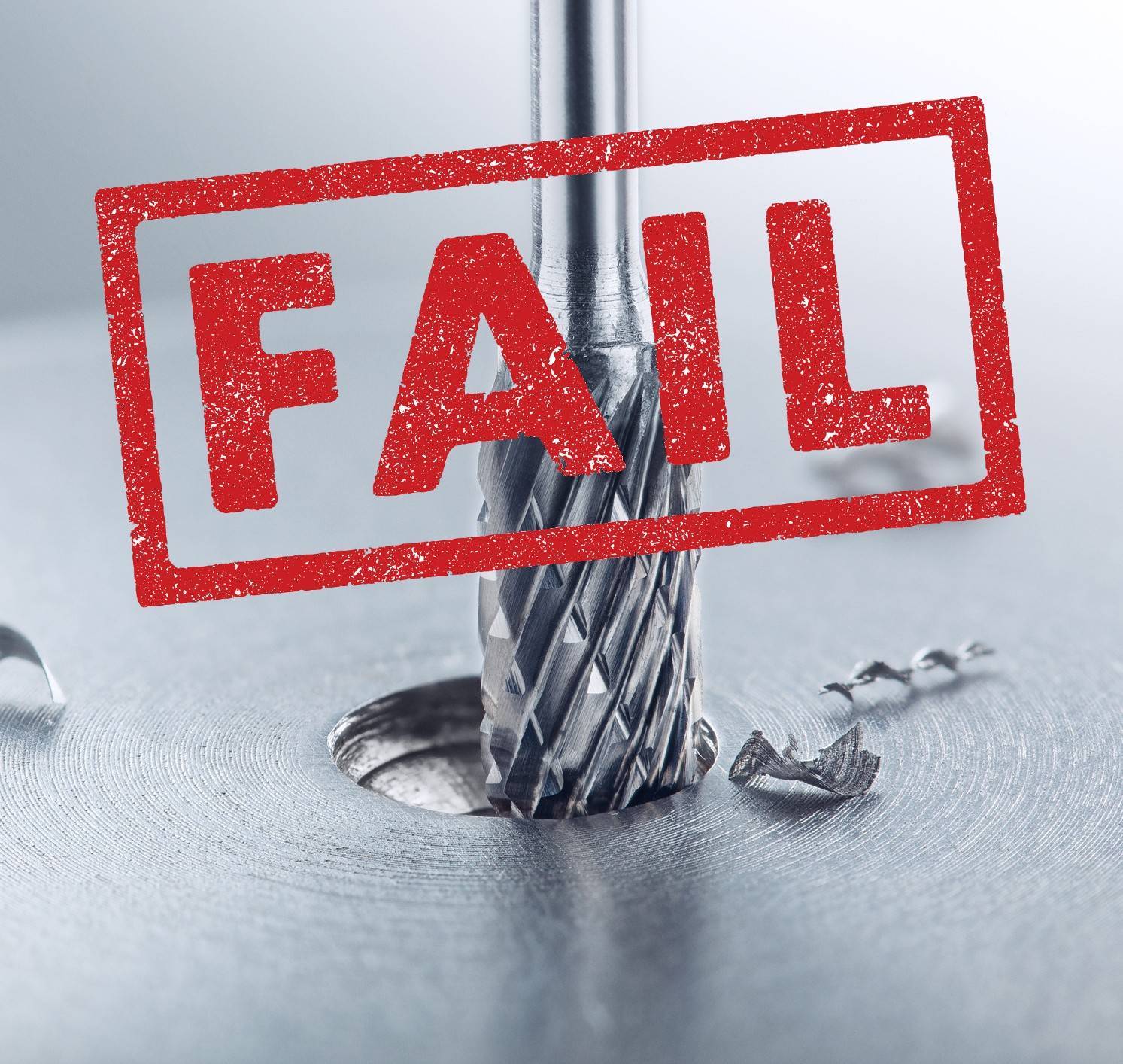

Metal Finishing Websites Fail in Crucial Benchmarks
Key Takeaways
-
Out of 200 metal finishing websites tested, only 2 websites achieved a "Good" score against Google's performance thresholds.
-
As an industry, websites for metal finishing companies broadly fail to meet current standards for user experience.
-
The study highlights the need for a proactive approach to web development, addressing performance issues to position businesses for sustained success.
A recent analysis revealed surprisingly poor performance for websites representing metal finishing companies.
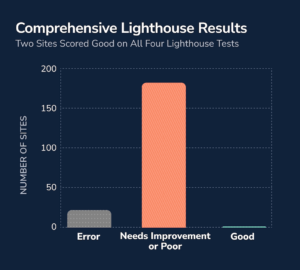
Two websites out of 200 tested scored above 90 on four Google Lighthouse tests.
Only two websites out of 200 tested in the study scored above 90 in all four components of the Google Lighthouse audit tool.
A score between 90 and 100 is considered "Good" in each of the four test modules.
The results indicate that companies in the metal finishing industry are underutilizing their website's potential as the most reliable tool for generating leads and positioning their brand for growth.
“We’ve seen it over and over. High-performance websites that are strategically planned and maintained will position any brand to compete – and win," said Cyndi Masters, Owner and CEO of DBS Interactive.
This is particularly true in B2B (business-to-business) manufacturing industries like metal finishing, where in-person networking is becoming extinct and salespeople increasingly depend on the website to attract prospects online who are performing research, discovery, and vendor selection primarily through search engines.
Speed Matters
Websites Lag in Vital Performance Test
Visitors to metal finishing websites aren’t that different from customers of those companies.
They want things fast.
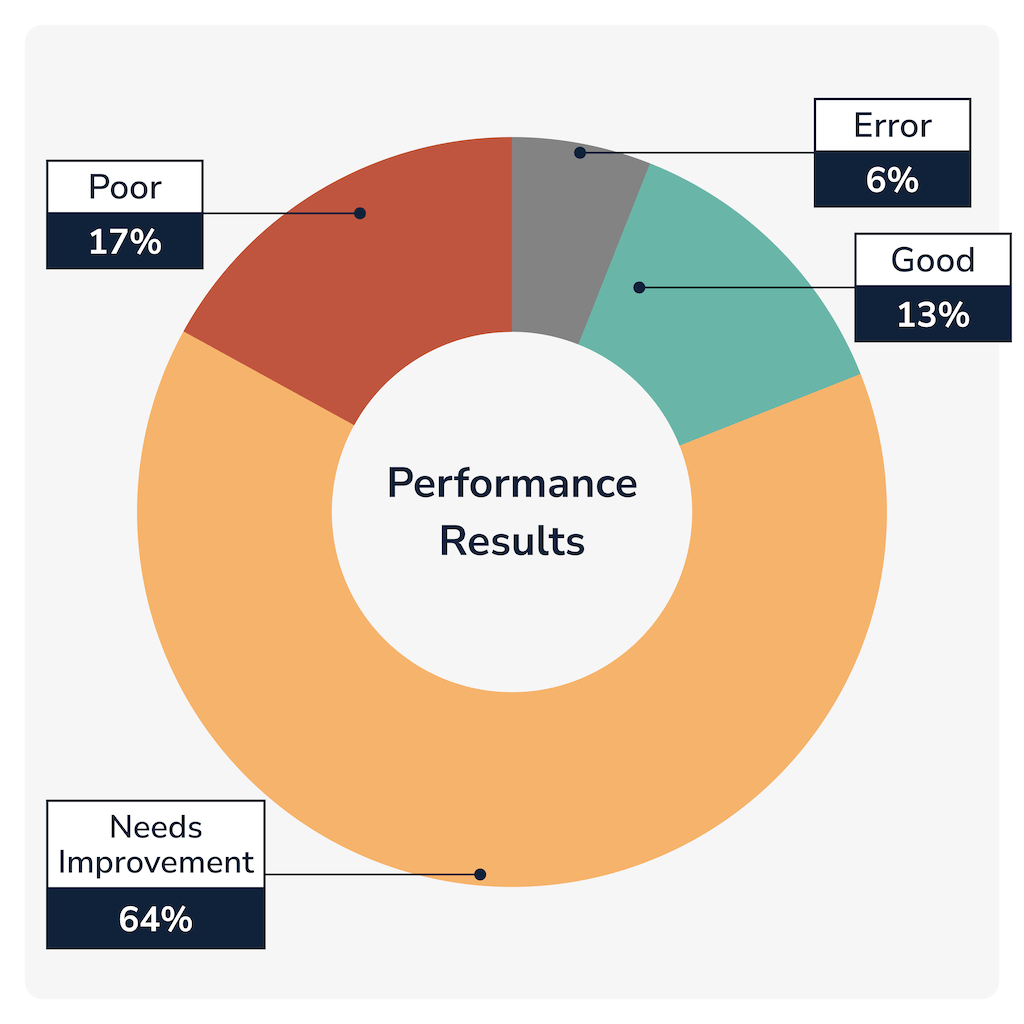
Longer page load time can reduce conversions and increase bounce rates.
Most websites turned in scores between 50-89, which correlates to “Needs Improvement.” Almost 19% of the websites had scores that put them in the "Poor" category.
The lowest-scoring site for the Performance test had a Speed Index of almost 42 seconds. The fastest site loaded in less than a second. Scores below 3 seconds are considered fast, and over 5 seconds are slow.
A Google study shows that the probability of a user bouncing or leaving a website immediately increases by 32% as page load times go from 1 second to 3 seconds.
A fast website has other advantages. Search engines factor website performance into organic search rankings and pay-per-click ad performance.
Only four websites scored 100 on the speed test. The worst-performing webpage, with a score of 13, turned in a score of about 16 seconds.
All things being equal, search engines will likely send users to a faster website if the quality of the information and other factors are similar to those of other websites.
Fractions of seconds matter.
A loading time faster than 3 seconds is considered good. Of the metal finishing sites tested, 161 loaded slower than that, with 108 taking more than 5 seconds to load, which is considered poor.
Still, it’s not critical to have a score of 100. Fowler said being in the green (the “Good” range) matters most.
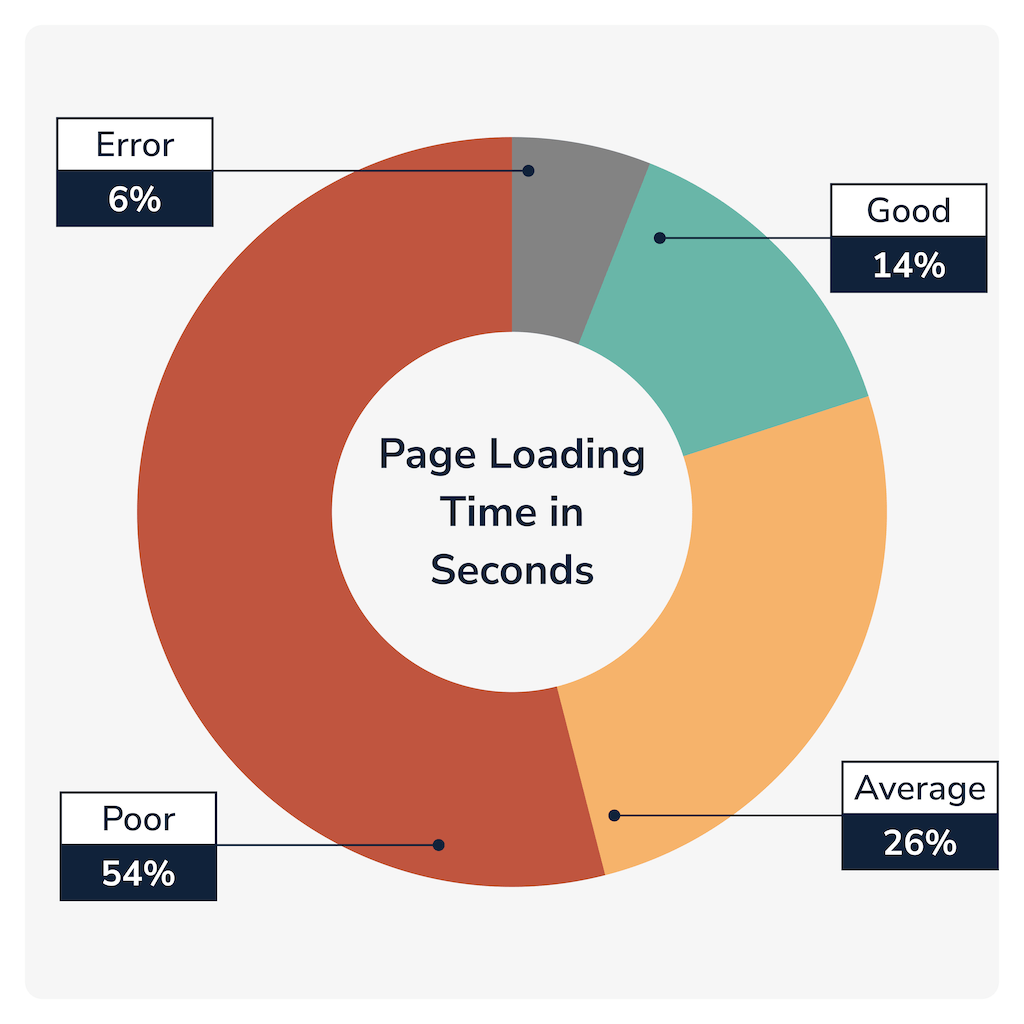
Over half the metal finishing websites had poor page load times of five seconds or more
“A modern, well-developed website can achieve high-performance without compromising visual aesthetics or web design principles,”
-Steve Fowler, Marketing Director at DBS Interactive
Akami, a cloud computing company, found that conversion rates can drop by 7% for every 100 millisecond delay in load time. That’s a lot of lost business opportunities.
AutoAnything, an e-commerce subsidiary of AutoZone, is often cited as a relevant example. Website developers cut page load times in half, increasing conversions by nine percent.
In the case of metal finishing services, a fast website creates a positive first impression and can support a brand story that includes better lead times.
“The really fast websites, regardless of the company or industry, have set the performance expectation. People will remember a bad web experience, whether it is for metal finishing services or seat covers,” Fowler said.
Closing a sale involves numerous factors. Turning away potential customers before they can get in the door is a lost opportunity, Fowler said.
Design and performance are not mutually exclusive.
The website for Arrow Finishing has a score of 96 for page speed performance. It features a bold design incorporating subtle animation and loads in about 1.5 seconds. Some of the websites tested lacked modern design and aesthetics, which produced their high scores. The Arrow site demonstrates that appearance doesn’t negatively affect performance scores.
Performance Maximizes Search Visibility for Websites
When web users need metal finishing services or are looking for employment opportunities at those companies, they usually begin their search on platforms such as Google, Bing, and others. Poor performance ratings for a company website can significantly affect its visibility and ranking in search engine results for keywords related to their offerings.
It's not just about ranking–being on the first page of search results is critical. Being in the first three positions, not counting sponsored links, is the ideal outcome because it drives the most traffic and awareness.
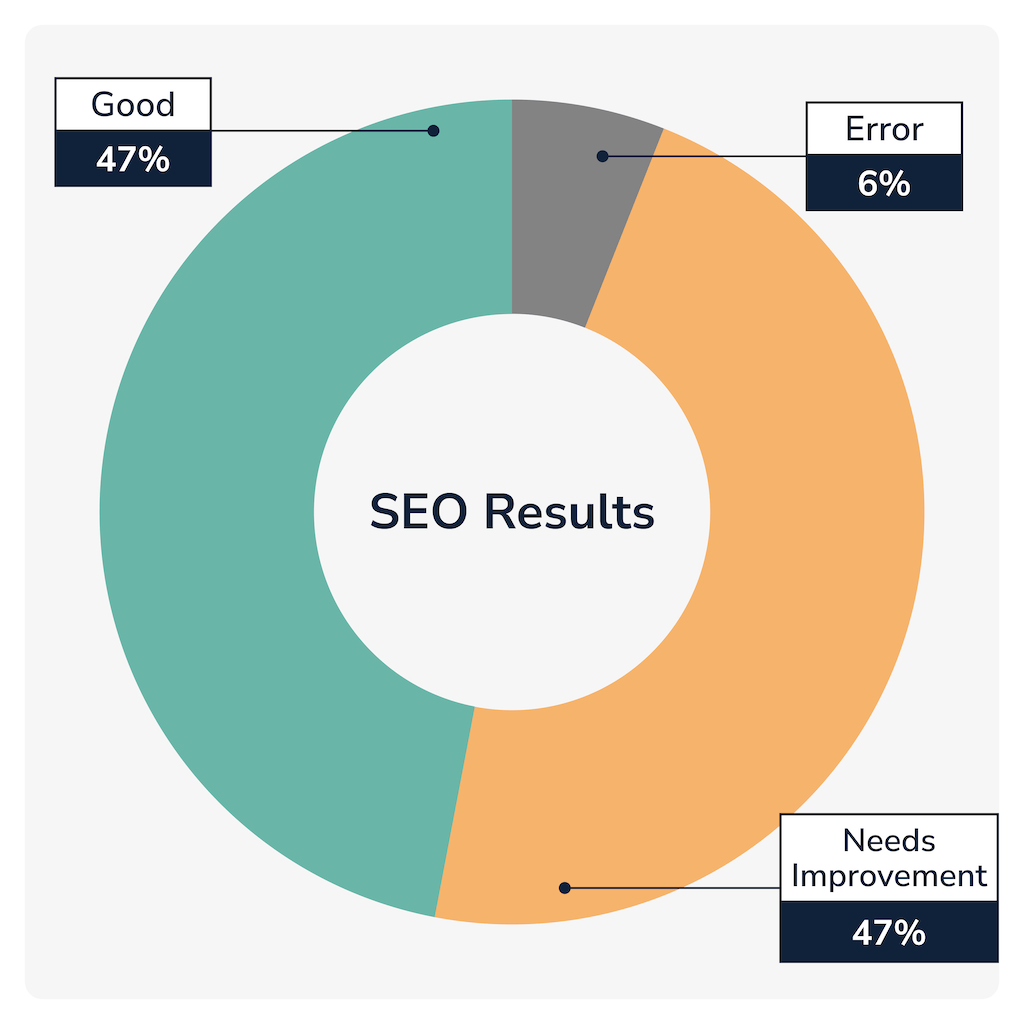
The SEO test evaluates elements such as meta tags, structured data markup, and mobile-friendliness.
SEO training company Backlinko, using Google data, found that less than 1% of users move to the second page of search results.
Lighthouse performance scores directly impact user experience signals such as page speed and accessibility, often causing high bounce rates and rendering keyword-optimized content ineffective.
Companies must prioritize website optimization to thrive in the competitive digital environment for better organic search performance.
The Lighthouse SEO assessment evaluates factors such as meta tags, mobile-friendliness, crawlability, and content quality.
“Your website is often the first impression people have, and with more users turning to search engines for metal finishing services, nailing website performance is a game-changer, said Steve Fowler, Director of Marketing at DBS Interactive.
Even though Google Lighthouse doesn't directly assess all SEO factors, aspects such as meta tags, structured data markup, and mobile-friendliness are key to organic search performance. Websites that follow best SEO practices are more likely to rank well and gain organic traffic.
Companies with low-performing websites face a competitive disadvantage as they struggle to attract visitors and stand out from competitors.
Optimized Websites Maximize Ad Impact
Companies may be wasting ad budgets with a low-performance website.
Many metal finishing companies rely on paid digital advertising to boost their position in search results. With relatively low clickthrough rates of about two percent for ads in Google Search, a company can’t afford to let a low-performing website drive away potential customers.
The numbers indicate that most metal finishing companies that use digital advertising have websites that need improvement. Most sites with paid campaigns had scores in the 50-60 range.
Websites with better performance scores offer an optimal user experience and can achieve better results, including higher conversion and reduced bounce rates.
“Beyond paid ads, a website with top-notch Google Lighthouse scores slashes PPC spending and attracts more organic traffic. It's not just about ads; it's about optimizing the digital presence for maximum results," - said Steve Fowler, Marketing Director at DBS.
Also, Google evaluates user experience for the websites to determine a Google ad’s Quality Score, which affects its ability to win ad auctions. A lower score indicates that Google perceives the ad, landing page, or overall user experience as suboptimal.
Low Lighthouse Scores Affect PPC Quality Scores
- May be displayed lower on the search engine results page (SERP).
- Result in a higher cost per click (CPC). Google rewards advertisers with higher scores by offering lower CPCs.
- Can limit the effectiveness of your ad extensions, reducing their impact on ad visibility and user engagement.
- Produce fewer impressions and a lower click-through rate (CTR).
“Nobody can afford to waste valuable marketing dollars," Fowler said.
Accessibility is Non-Negotiable
Page speed and accessibility are two sides of the user experience coin.
In the DBS study, 64% of the websites scored below 89 for accessibility, putting them in the Needs Improvement or Poor categories.
An accessible website allows users with lifelong or temporary disabilities, including users with age-related vision, hearing, or motor skills, to browse it.
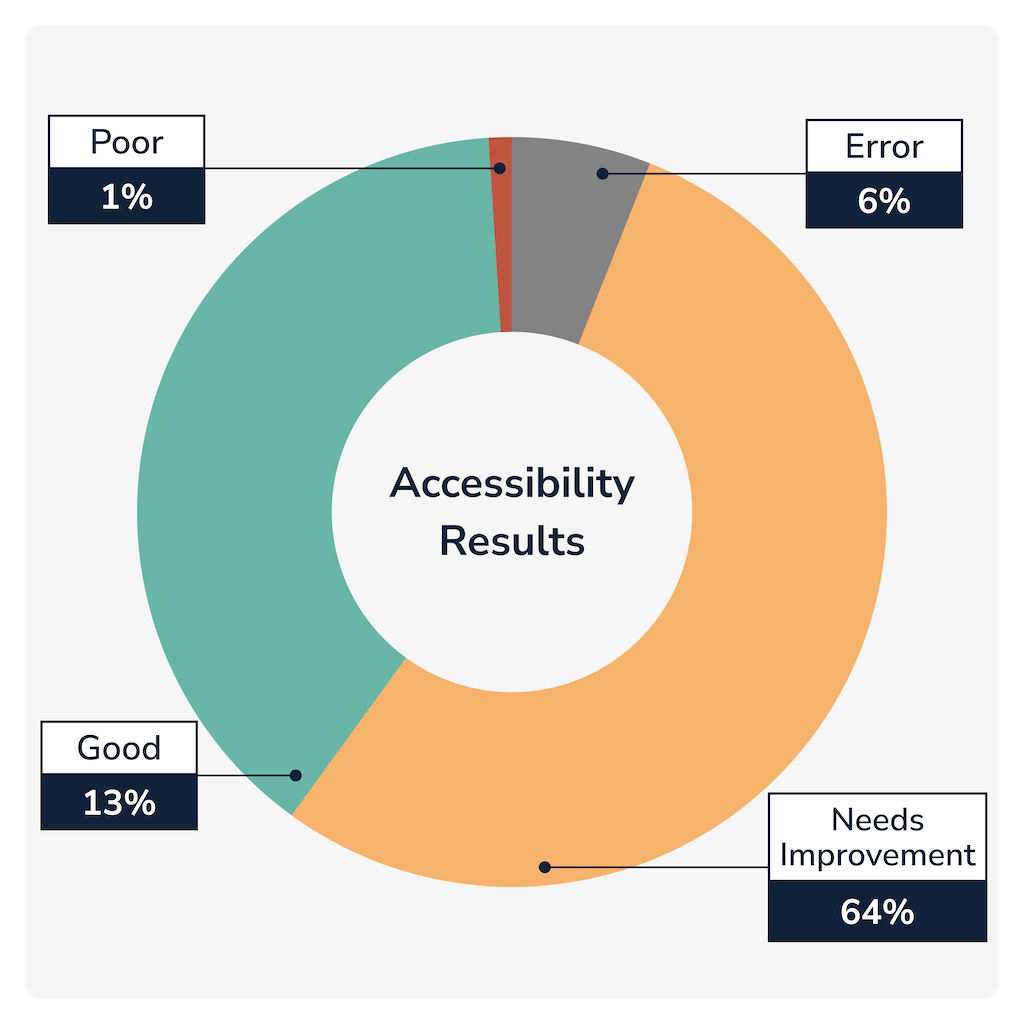
Lower Accessibility scores can affect organic search performance.
“It’s amazing. Businesses often install automatic doors on their buildings yet don’t consider helping people enter their website,”
-Cyndi Masters, Owner and CEO of DBS Interactive
Just like Performance, website usability supports organic and PPC performance.
For example, using “Alt Text” for images adds information for screen readers for users with visual impairments. That same information offers search engines cues for understanding the page content.
A more menacing issue for websites with low Accessibility scores is the significant legal risk this creates.
Low scores raise a red flag for legal departments responsible for minimizing a business’s exposure to lawsuits. The Americans with Disabilities Act has been interpreted to require accessible websites just as it requires accessibility for physical places.
“We’ve seen low accessibility scores across all industries,” said John Golden, Director of Development at DBS Interactive. “The problems range from images missing Alt Text and poor color contrast to inaccessible form controls and keyboard navigation issues,” he said.
Despite lawsuits against notable companies like Domino's Pizza, Target, and Harvard University, many other companies have not come around to building and maintaining a website that complies with the Americans with Disabilities Act (ADA). Today, compliance generally equates to following the WCAG 2.1 AA criteria.
Of the websites that achieved “Good” scores, 10 returned scores of 100. At the low end, two websites scored “Poor.”
Benefits of an Accessible Website
- Improved search engine performance
- Positive brand reputation
- Faster user experience
- Improved user pathways
- Attracts and serves a wider audience
- Reduced legal exposure
Any Lighthouse Accessibility score below 90 means the website’s lack of accessibility could make it the target of a lawsuit.
About the Website Study
DBS Interactive, a full-service digital agency in Louisville, Kentucky, reviewed 201 websites for metal finishing companies across the United States in May 2024.
The results match previous studies for the websites of industrial companies, indicating that the lack of adherence to best practices is not unique.
| Facility/Business Name | Performance | Accessibility | Best Practices | SEO |
| Optimal Performance Innovations. External Link. Opens in new window. | 95 | 100 | 100 | 92 |
| Arrow Finishing. External Link. Opens in new window. | 94 | 91 | 100 | 100 |
Evaluations were done on the mobile component of the Lighthouse tool. In organic search rankings, Google prioritizes scores and the mobile user experience over desktop browsers.
Two sites scored 90 or above on all four tests.
OTHER HIGHLIGHTS
- The average page speed score was 66.
- The lowest page speed score was 13.
- 9 sites were unscannable and were omitted from the study.
- At least 37 sites were not secure with HTTPS.
“Addressing performance issues and enhancing accessibility not only ensures compliance with digital standards but also positions businesses for sustained success in the competitive digital landscape,” said Cyndi Masters, CEO and Founder of DBS Interactive.
She also noted that two websites scoring above 90 on all four tests were the lowest number she had seen across testing in various industries.
The study highlights the need for a proactive approach to web development. Addressing performance issues and enhancing accessibility ensures compliance with digital standards and positions businesses for sustained success.
The Mobile Experience Matters
Another finding in the study revealed only one website incorporated the Progressive Web App (PWA) technology.
Arrow Finishing rounds out its high performance in the Google Lighthouse audit by building its website as a PWA.
As more users access websites from mobile devices, performance optimization becomes essential. Google Lighthouse evaluates a website's performance on mobile devices, emphasizing the need for responsive design and efficient loading times to cater to the growing mobile user base.
Websites built as PWAs are faster, more responsive, and capable of performing like an app, yet can still be indexed for organic search and usable as a traditional website. The architecture of a PWA supports a better user experience.
PWA Benefits
- Fast loading time
- Operates on poor networks
- Small development footprint
- Integrates app-like features
- No app stores, no downloads
- Instant updates
Here are easy-to-follow instructions for running the Google Lighthouse tool.
Keeping Your Website Healthy
The poor scores represent opportunities for metal finishing businesses to implement website performance improvements. Companies can document the results of the effort by tracking improved search rankings, higher click-through rates, and Lighthouse scores.
The five websites that returned errors point to the need for routine maintenance and careful attention to analytics.
There are numerous reasons for the testing failure.
- Slow server response time
- Unoptimized images or resources
- JavaScript and CSS render-blocking
- Large page size
- Lack of caching mechanisms
- Broken or incorrect links
- Accessibility issues
- Deprecated HTML/CSS/JavaScript features
- Inefficient code execution
- Cross-origin resource sharing (CORS) issues
The need for improvement is obvious, with only a handful of websites achieving optimal scores and others failing.
“It’s an investment that benefits visitors and the bottom line,” she said.
Test your site using the free Lighthouse tool then CONTACT US about ways to improve the performance of your metal finishing website.
Metal Finishing Websites Tested
DBS Interactive selected these companies for testing using Thomas®. In the Google Lighthouse audit tool Websites scoring between 90-100 are considered to have GOOD performance. Scores ranging from 50-89 NEED IMPROVEMENT, and scores from 0-49 are considered POOR. Here are simple instructions for running Google Lighthouse.
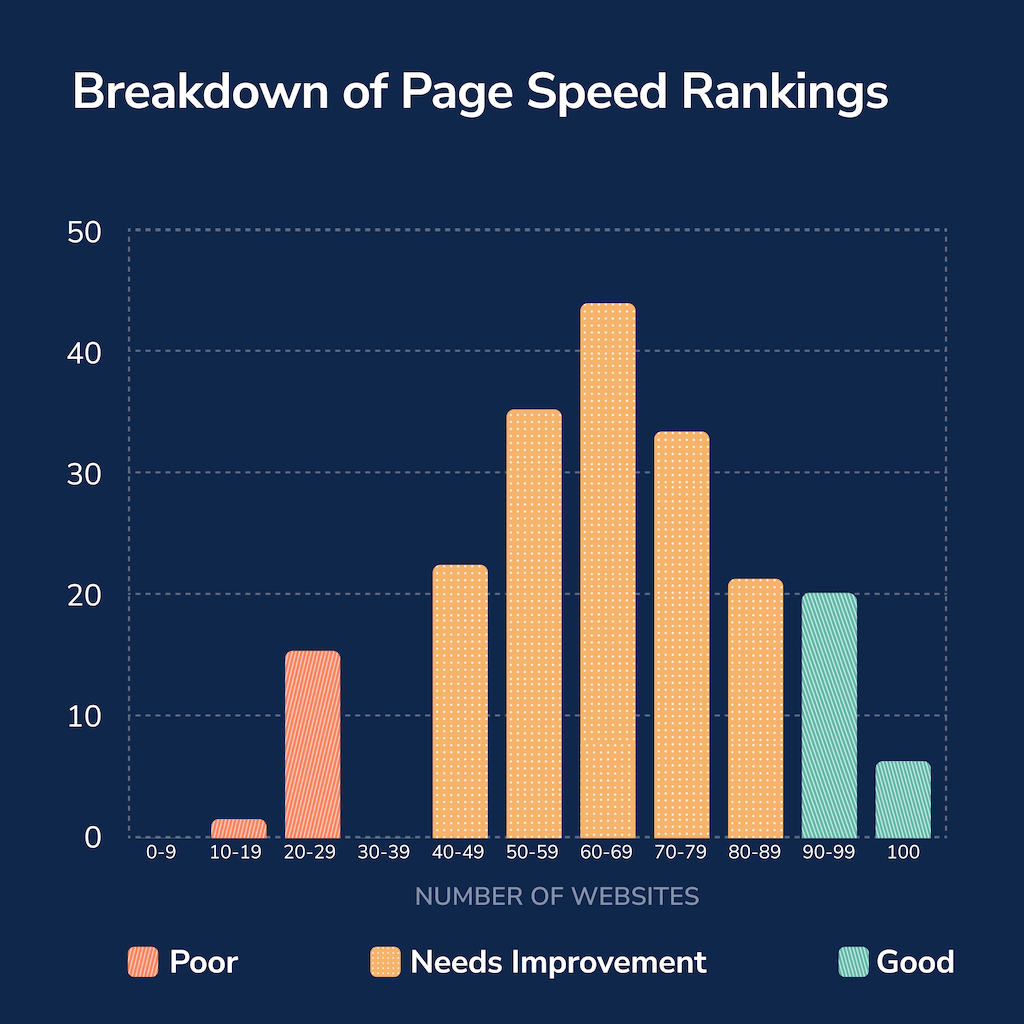
How websites performed on the Performance test.
DBS Interactive selected these metal finishing companies for testing using the Google Lighthouse audit tool. Websites scoring between 90-100 are considered to have GOOD performance. Scores ranging from 50-89 NEED IMPROVEMENT, and scores from 0-49 are considered POOR.



